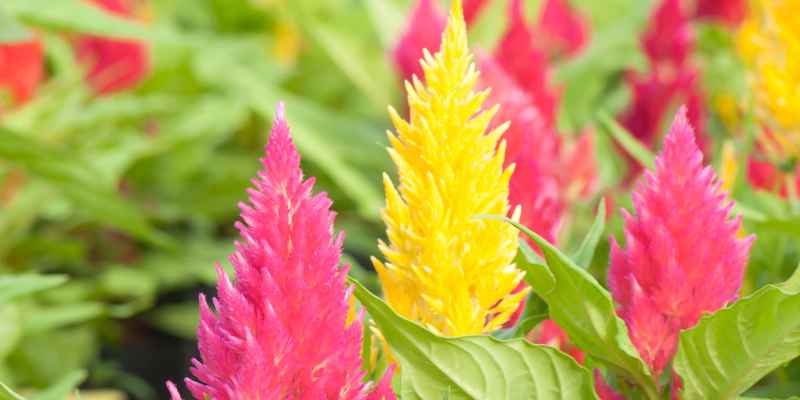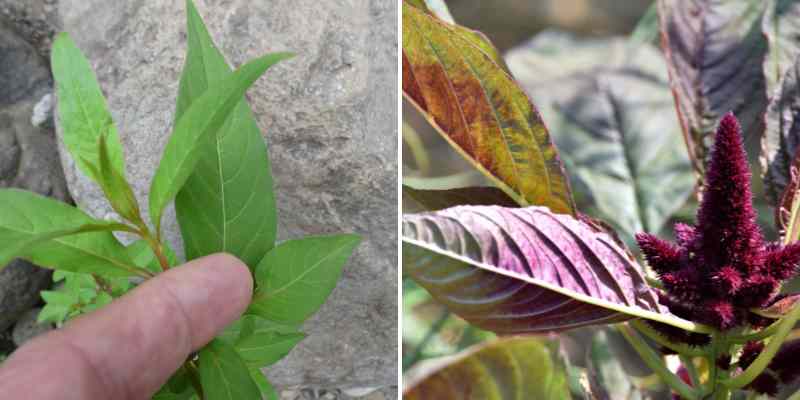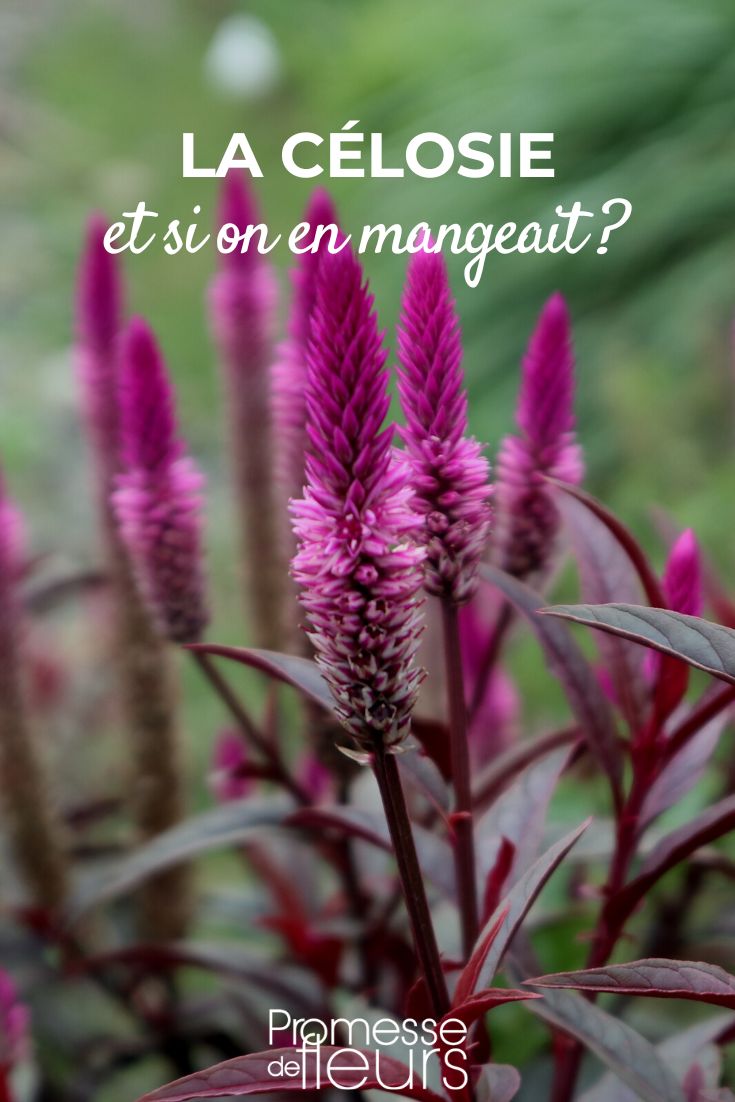The Celosia, this quirky summer plant with vibrant colours, features flame-shaped inflorescences that are almost otherworldly. With its feathery or crested flowers, it feels like a plant from another era, often enlivening window boxes and flower beds with its bright hues. Used in floral art for its originality, the eccentric Celosia is also edible. This lesser-known culinary tradition, which could spark renewed interest in this plant among those interested in plant-based cooking, deserves to be highlighted.

Celosia, an Exotic Eccentric
The celosia, known by its Latin name Celosia, belongs to the Amaranthaceae family. Its name derives from the Greek 'kêleos', meaning "burning", in reference to its shimmering colours. Native to the tropical regions of Africa, Southeast Asia, and Central America where it grows as a perennial, it has naturalised in all warm regions of the globe. It is cultivated here as an annual (except in zone 10, which includes the Mediterranean fringe), often used to create borders in warm colours. The flowers, either upright or pendulous, indeed take on very vivid shades, ranging from yellow and orange to fuchsia pink and crimson red. It blooms for a long time: all summer until the frosts. There are about 60 species worldwide, with the most common being Celosia argentea or silver celosia, along with its many variations, Celosia argentea 'Cristata' and Celosia argentea 'Spicata' or 'Plumosa'. Some, in pink, have a false resemblance to Astilbe, but… they thrive in the sun!
Reaching up to 2 m in the tropics, silver celosia (Celosia argentea) remains much more modest in the northern hemisphere, where it measures between 20 and 60 cm for the tallest varieties.
While it is the flowers, striking for their colours, that catch the eye, it is undoubtedly the extravagance of their feathery, velvety, and undulating texture that surprises. This has earned it the widely used nickname of velvet flower or cockscomb. A true comfort plant!
In terms of cultivation, they prefer well-drained, rich soil, but ordinary soil is suitable, along with sunny exposure and regular watering. The soil should remain moist, so a thick mulch is more than necessary during the height of summer.

Celosia as a Vegetable Plant
What is less known is that this plant has been cultivated for a long time in the tropics for its leaves. These are indeed edible, and in Africa (especially in Senegal, Nigeria, and Cameroon), India, and China, the Celosia argentea var. argentea is considered a common leafy vegetable, on par with Swiss chard, spinach, or sorrel in our cuisine. It is also known in English as Lagos spinach, named after the city of Lagos in Nigeria where it is popular.
Silver celosia belongs to the same family as amaranths, whose leaves are also edible (however, those of amaranth are slightly more bitter).
It is primarily the young shoots that are cooked. The leaves are harvested before flowering, as they are more flavourful and tender than when the Celosia is in bloom. The taste varies by species, ranging from mild to slightly spicy. Silver celosia has a less harsh and earthy flavour than spinach.
The leaves of silver celosia are rich in calcium and iron (almost 10 times more than regular spinach), as well as vitamins A and C. However, be sure to correctly identify your plant and only use Celosia argentea for consumption.

Cooking with Celosia
The tender leaves will primarily be used in cooking, by cooking them and incorporating them into various dishes.
They are consumed like spinach. Generally, they are cooked in a pan with butter, just as one would do for a serving of spinach. However, it is essential to always blanch them beforehand to remove the oxalic acid they contain.
Celosia leaves can be sautéed with other vegetables and spices, especially incorporated into Indian vegetable dal, with lentils or chickpeas.
Try also adding them, chopped, to green soups, or using them as a herb on pizza at the end of cooking, or simply finely chopped in a potato salad.
Silver celosia (Celosia argentea var. argentea) produces very small seeds that are used as grains or pseudo-grains (similar to amaranth seeds). In India, they are often cooked in water or ground into flour, recognised for their high nutritional value.

Celosia: A Health Asset
In addition to its vitamin and mineral content, celosia is known for its anti-diarrhoeal and haemostatic properties. It also has antioxidant properties. In Ayurvedic medicine, it is used to treat headaches, diarrhoea, and skin rashes.
Learn more in the study published in 2018 in the Research Journal of Pharmacology and Pharmacodynamics.
































Comments